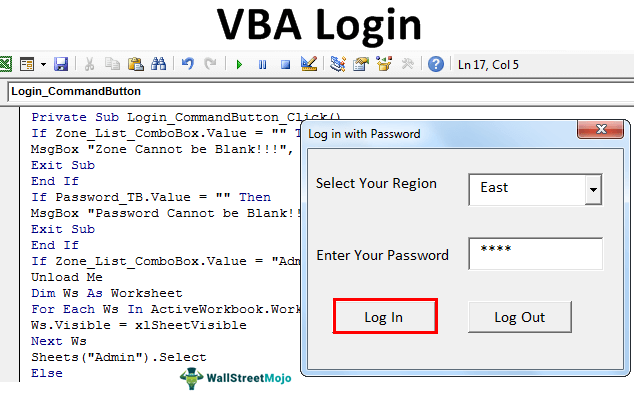

Above, we declared the variable “countWords” as an integer, as it will only take integer values.

The next thing to do is prepare the function by declaring our variables. We are only interested in the number of whole words in the phrase, so are looking to return an integer value.

(phrase as string) – this is the input we need to enter, and will be the search keyword/ phrase.Īs Integer – this is the type of information returned by the function. When we wish to use it, we will enter into a spread sheet cell “countWords” (just as we would enter “SUM” to use that function). Our function is going to take the keyword/ phrase as an input, count the number of words in it, then return that number.ĬountWords – this is the name of our function. This function takes some input values, adds them together, and returns another value, the sum of the inputs. For example, Excel has a built-in function called “SUM”.
Excel vba examples data management code#
A function is a piece of code that takes one or more values, does something with them, and returns another value. This line tells us a few important things:įunction – the first word tells us what type of code is going to follow. The above is the first line of our function – copy it into the module you created, under the words “Option Explicit” which should be already entered (don’t worry if not, just copy it in at the top – I will come back to this later). Adding Codeįunction countWords(phrase as string) as Integer So we turn to VBA to write a new function to do this. With hundreds or thousands of keywords, it would be too time consuming to manually count the number of words in each phrase, and there is not a built-in function in Excel to do it for us. “dresses” may be treated very differently to “red party dresses”. For a recent piece of analysis, I was asked to find a way of counting the number of words within a search term, so that single keywords could be dealt with differently to phrases – e.g. One element of the data gathered in SEO and PPC will often be keywords/ phrases, and this can be a lot of data to work with. You are now ready to write your first function. This will add a code module, a container for the code we will write. Right click on “ThisWorkbook”, go to “Insert” and “Module”. Highlighted on the top left of the window, within the Project Explorer pane, will be icons for each sheet of your document, and one for the workbook itself. A new window will open – this is the VBE (Visual Basic Editor), where we can write our own functions to use within the usual spread-sheet view of Excel. Open a new document in Excel, and press ALT+F11.
Excel vba examples data management how to#
Below I describe how to write a simple custom function, and some general advice on how to get started with VBA. Previous blog posts have covered how this data can be managed and analysed using Excels built in functions – but what do you do when the function you need isn’t there? Using Excels built in VBA (Visual Basic for Applications) editor, we can write our own to do exactly what we want. Working in the SEO or PPC industry usually means handling large amounts of data.


 0 kommentar(er)
0 kommentar(er)
